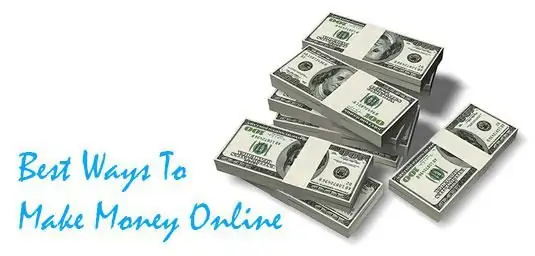2026 Author: Howard Calhoun | [email protected]. Last modified: 2025-01-24 13:10:47
Money, the definition of which will be discussed below, is often referred to as the language of the market, because with its help the circulation of resources and goods is carried out. Consumers purchase goods from producers, who then pay cash for the resources provided to them by the population. A properly organized and well-functioning monetary system ensures the stability of national production, price stability and full employment of the population.

So what is money? The economic definition says that it is a measure of the value of goods. It is with the help of money that we measure and compare the cost of various services, a particular product. But there is also such a thing as "the price of money." It is rather difficult to define it. It all depends on what exactly we mean by the word "money". The fact is that this financial term is multifaceted, and with one definition given above, to reveal the entirethe meaning implied in this word is impossible. Let's understand what money is. And what they are.
Such different money. Definition of M1
Neither economists nor officials have agreed on a common opinion about the components of M1. This symbol denotes the money supply, consisting of 2 elements:
1. Cash (both paper and metal), which is used by all economic entities, except for banking structures.
2. Deposits (checkable deposits) in savings banks, commercial banks and other savings institutions that can be checked.

Thus, cash is the debt obligations of the state and its departments, and checkable deposits are the obligations of savings institutions and commercial banks.
What is money? Definition of M2
A broader wording has been proposed by the official credit departments. M2=M1 + savings accounts (checkless) + money market deposit accounts + term deposits (less than $100,000) + money market mutual funds. The main point is that all components of the M2 category can be easily and without any loss converted into checkable deposits or cash.
Money: definition of M3
The third interpretation - M3 - recognizes the fact that time deposits (over $100,000), which are usually held by business entities in the form of certificates of deposit, can also easily turn into checking deposits. Such certificates have their own market where they can bebuy or sell at any time. But at the same time, it is worth remembering the risk of possible losses. By adding term deposits to the M2 category, we get the third formula for determining money: M3=M2 + term deposits (over $100,000).
Reasons for the emergence of monetary units
The reasons for the appearance lie in the product contradiction, or rather in the contradiction between the price of the product and its consumer value:
- in terms of consumer value, absolutely all goods are quantitatively incommensurable and qualitatively heterogeneous, and also have varying degrees of utility. Cakes and boots are not only not similar, but are also made by representatives of various professions;
- in terms of price, goods are quantitatively commensurate and homogeneous. Therefore, in the process of exchange, the most exotic things can be compared and equated.

Internal contradictions of the commodity itself appear only in the process of exchange. And it cannot be valued without being placed on the market. The only way to measure its price is to compare it to other products. The expression of the cost of producing a commodity is called exchange value, the gradual development of which leads to the emergence of external polarities, the development of internal commodity contradictions and, in general, to the confrontation between money and goods.
Recommended:
Make money on the Internet on assignments: ideas and options for earning money, tips and tricks, reviews

There are a lot of ways to make money on the Internet without investments and deception. But where and how much can you earn online? Is it necessary to create your own website? How to get the first profit? What tasks need to be completed in order to receive income, and how to withdraw money?
How a girl can make money: types and list of jobs, ideas for making money online and approximate pay

Real work has a lot of drawbacks. I have to wake up early, and endure crushes in public transport, and listen to the displeasure of the authorities. Such a life is not happy at all. For this and other reasons, many of the fair sex are thinking about the same question, how can a girl make money on the Internet
Demotivation is Demotivation: definition, causes, factors and examples

Demotivation of personnel is designed to push the employee to reconsider his attitude to the performance of work duties. He is expected to adequately assess his role and usefulness in the organization. Thus, the purpose of demotivation techniques is to sober up the employee and stimulate his performance
How to make money without money? Ways to make money. How to earn real money in the game

Today everyone can make good money. To do this, you need to have free time, desire, and also a little patience, because not everything will work out the first time. Many are interested in the question: "How to make money without money?" It's a perfectly natural desire. After all, not everyone wants to invest their money, if any, in, say, the Internet. This is a risk, and quite a big one. Let's deal with this issue and consider the main ways to make money online without vlo
Castrated horse: definition, name, causes, features of care and maintenance of gelding

People are already used to castration of cats, but not everyone wants to apply this procedure to other animals. Men especially object to such an operation, who for some reason are more (than women) inclined to humanize animals. But sometimes this procedure is necessary. There can be many reasons: medical indications, correction of undesirable behavior, method of contraception in the herd

